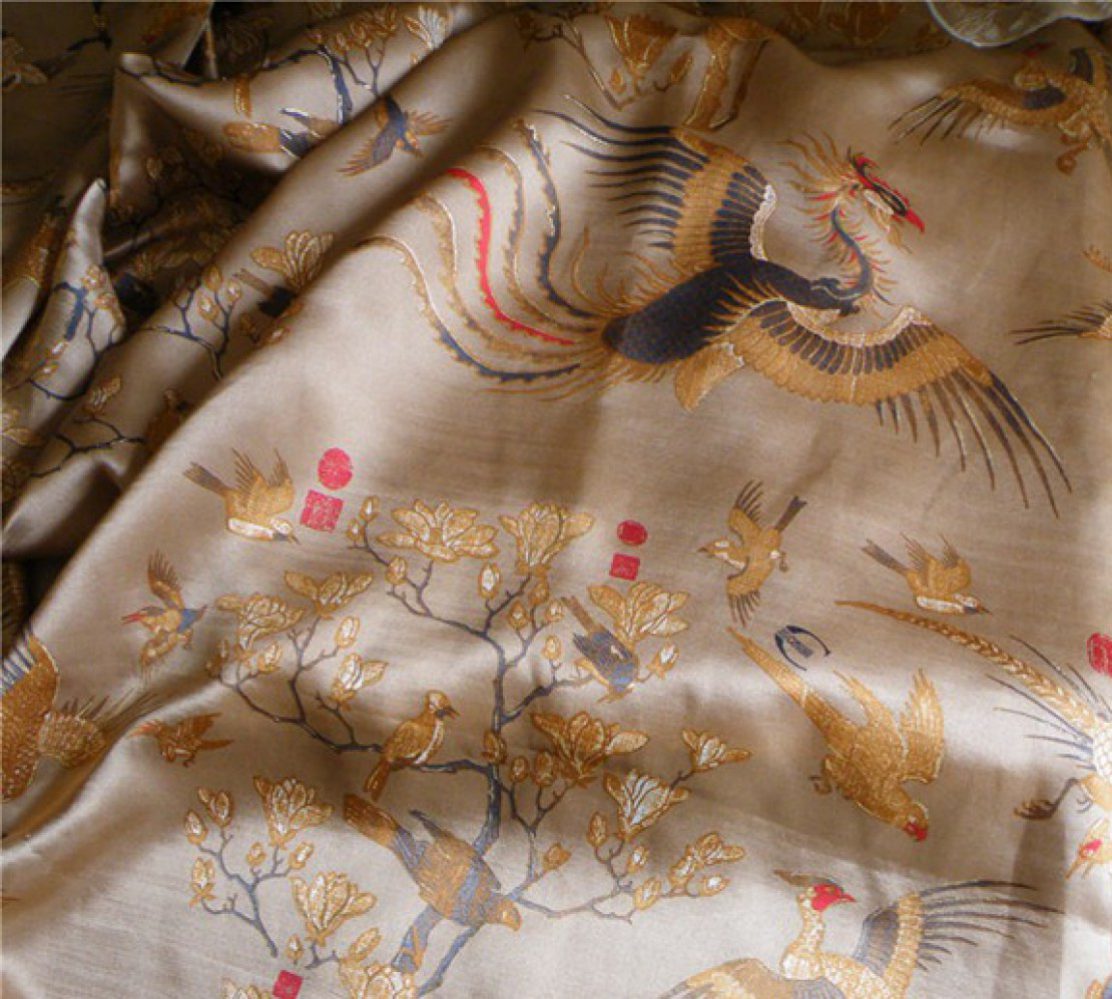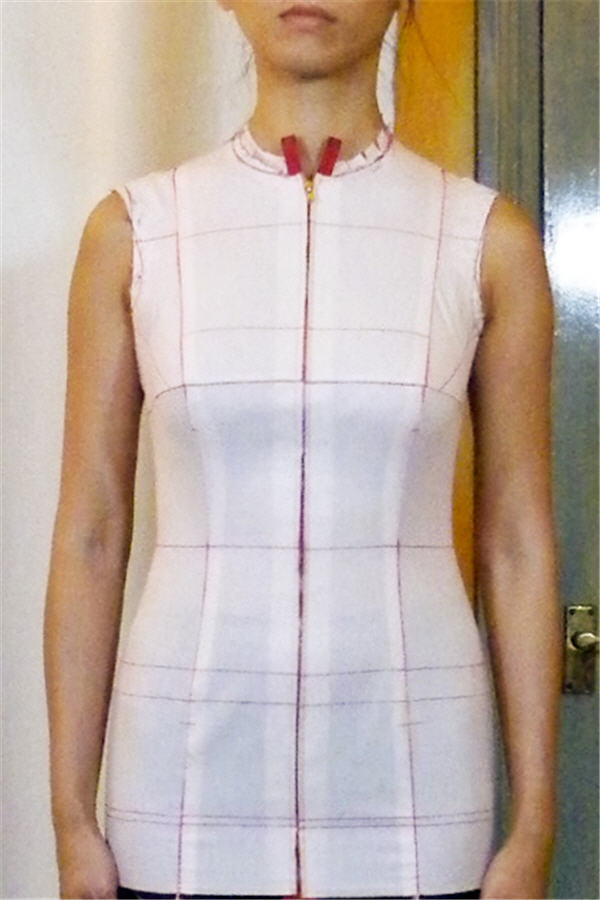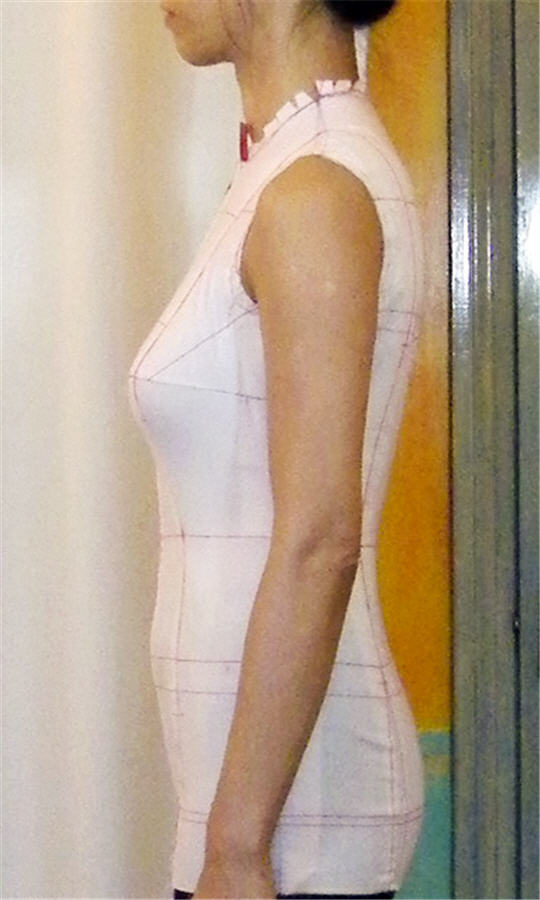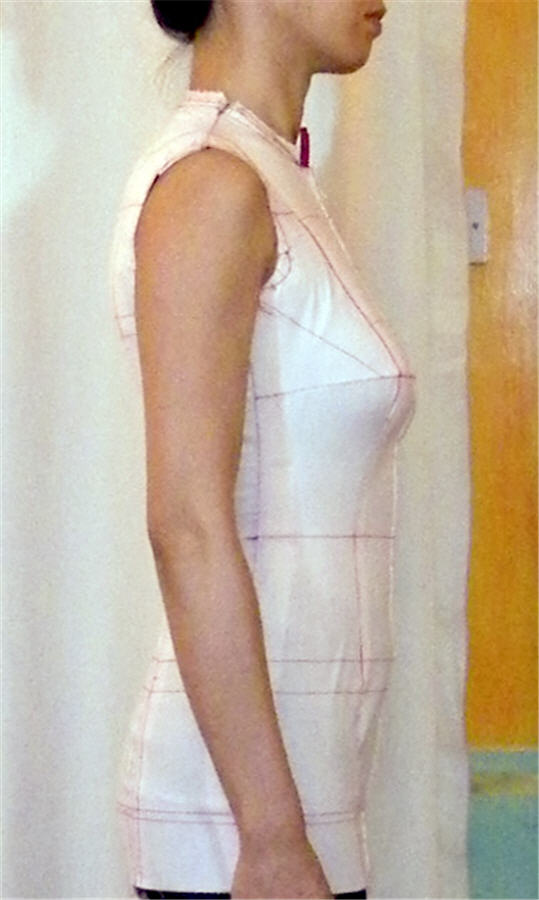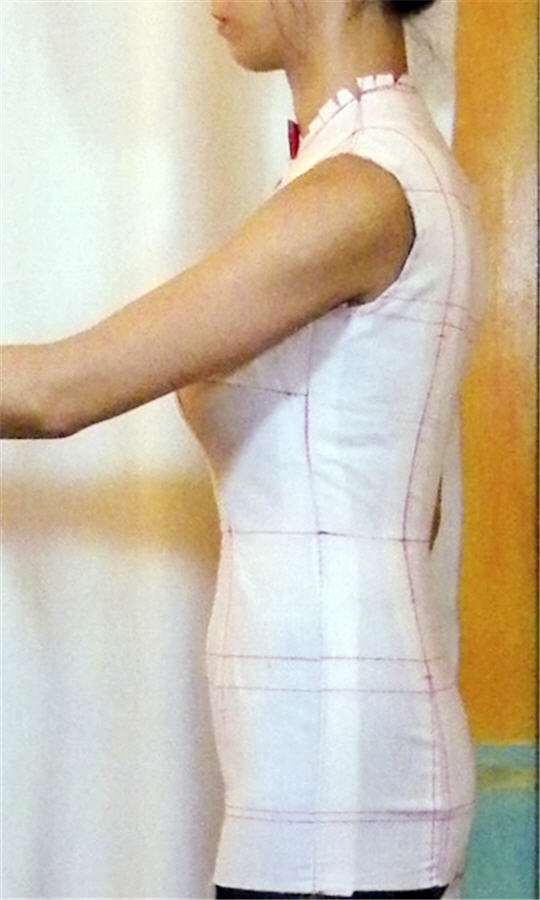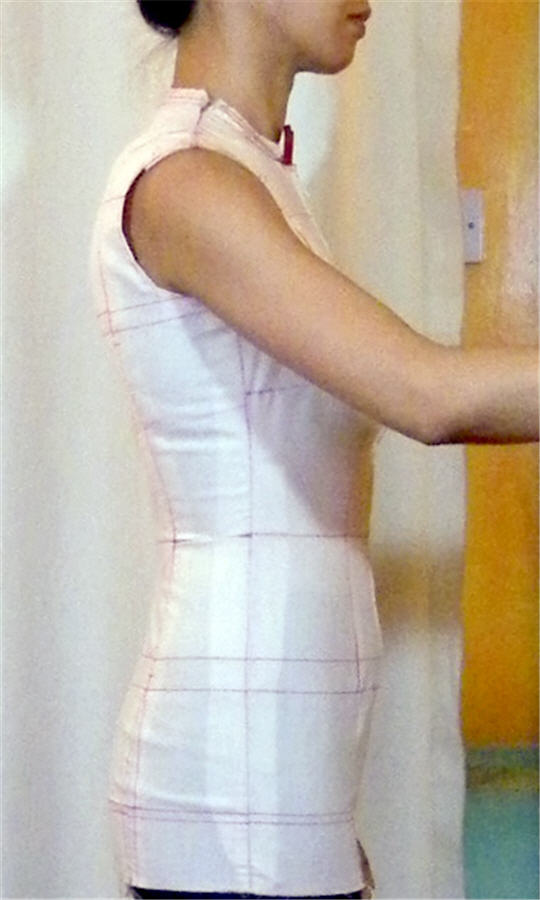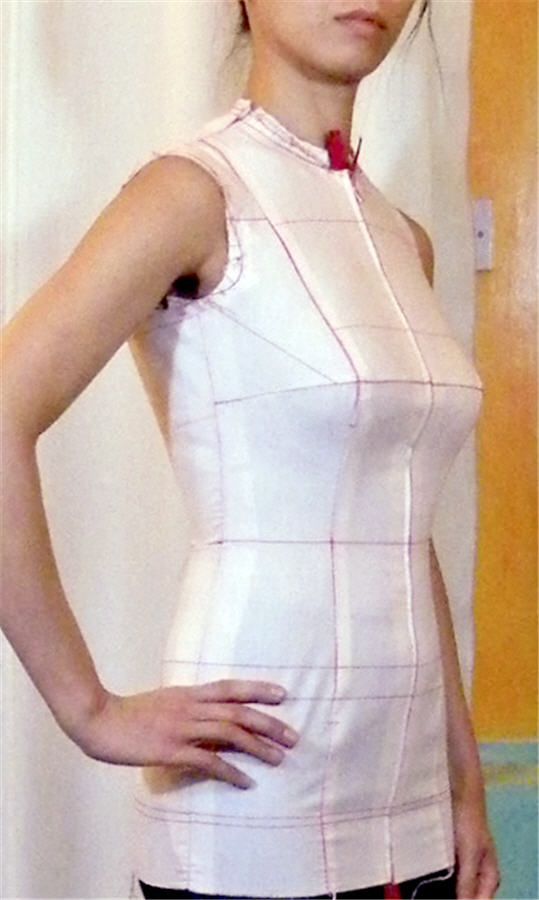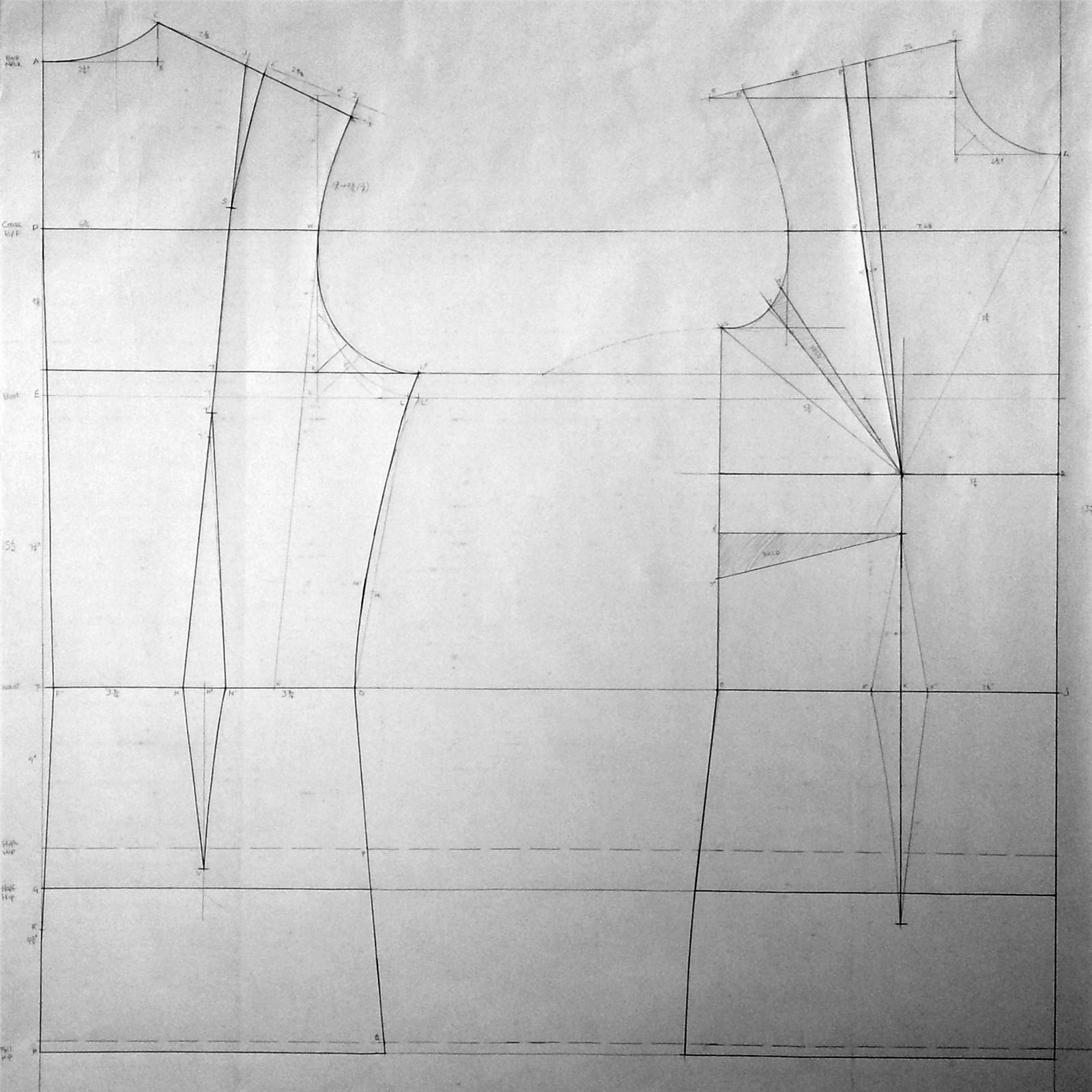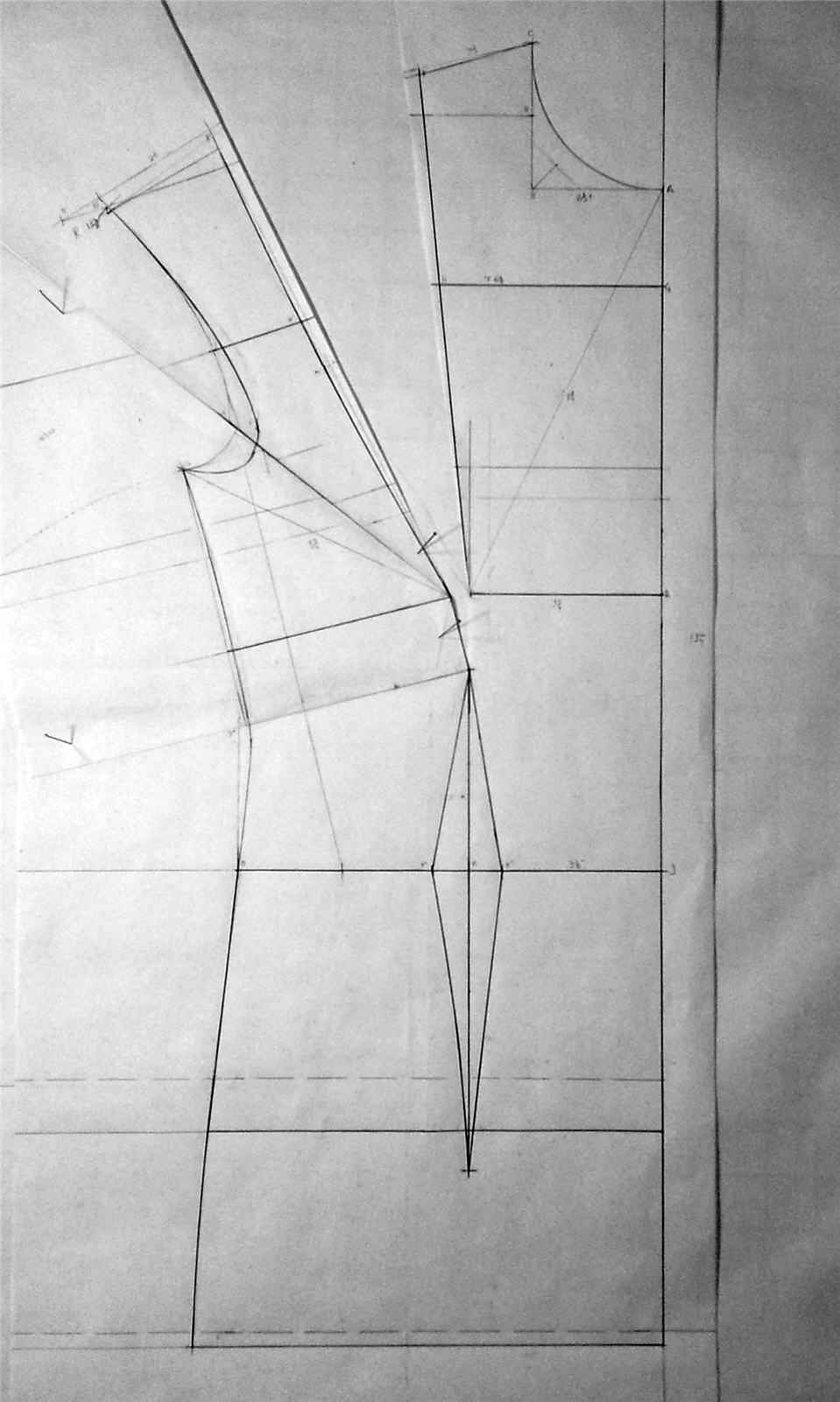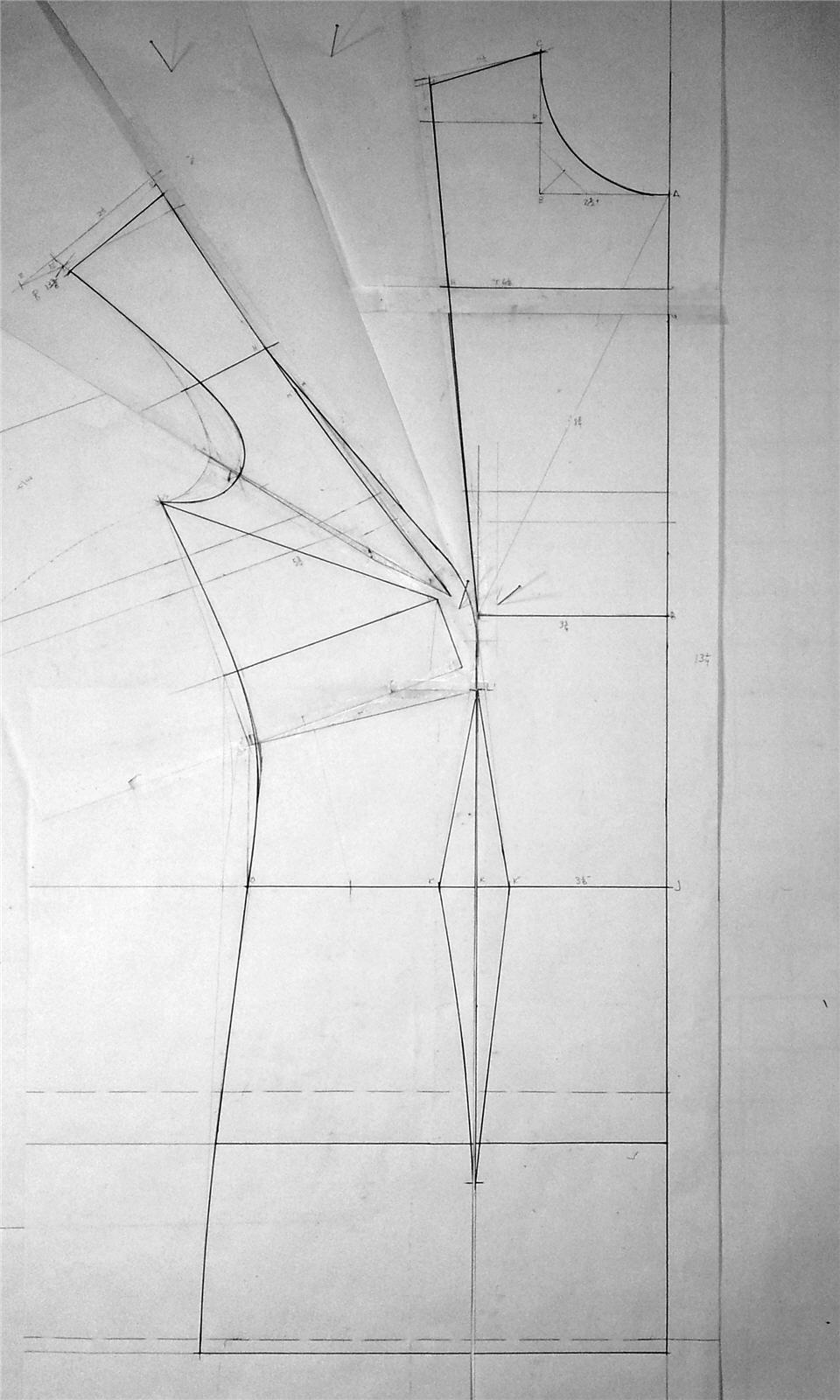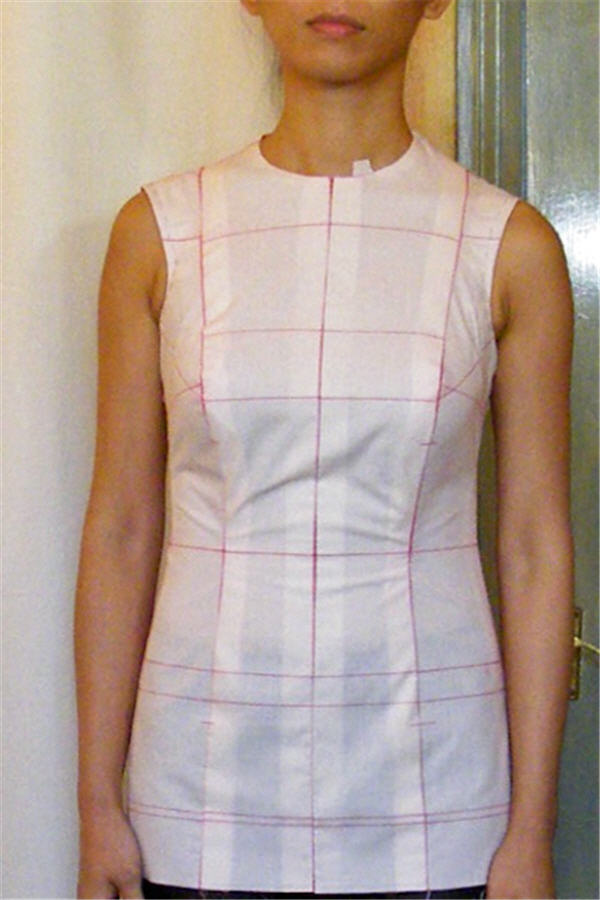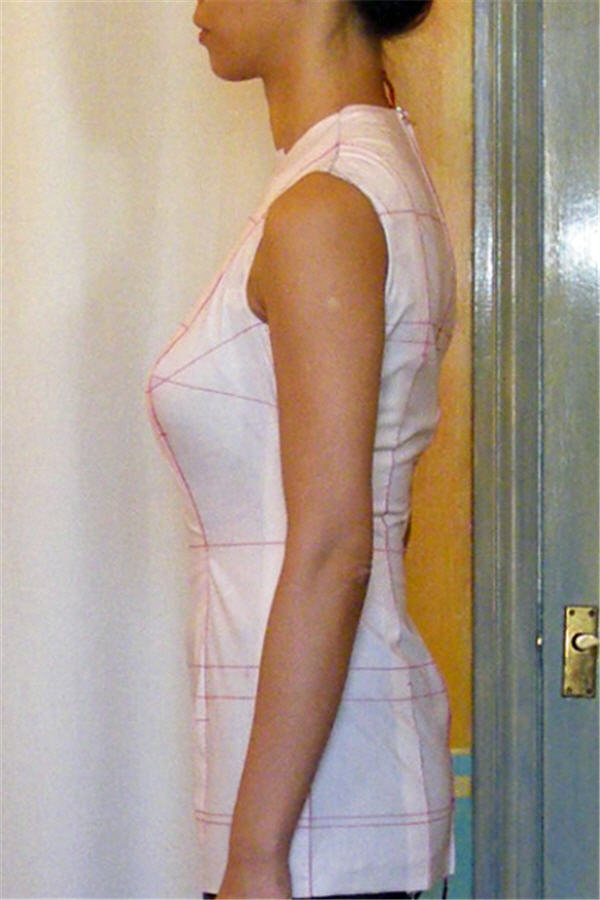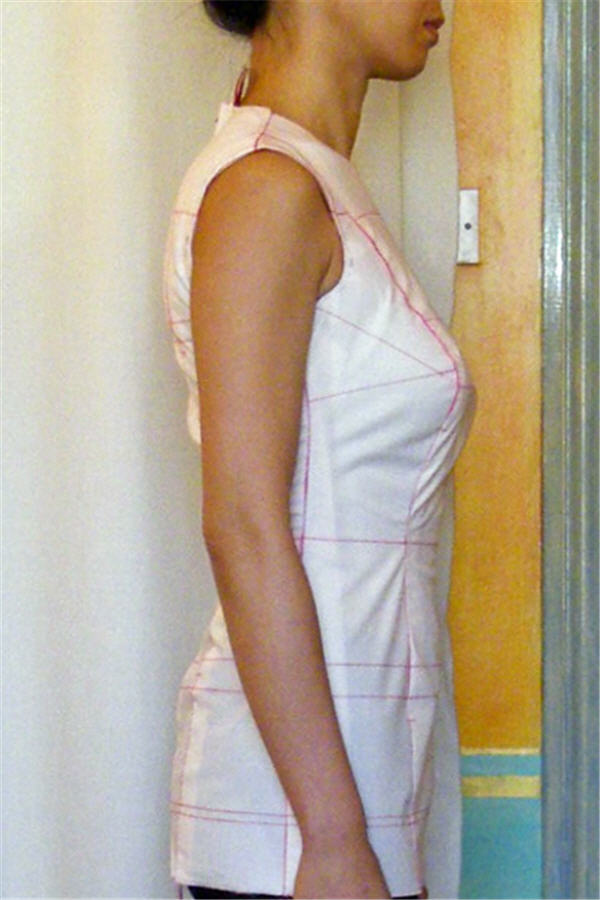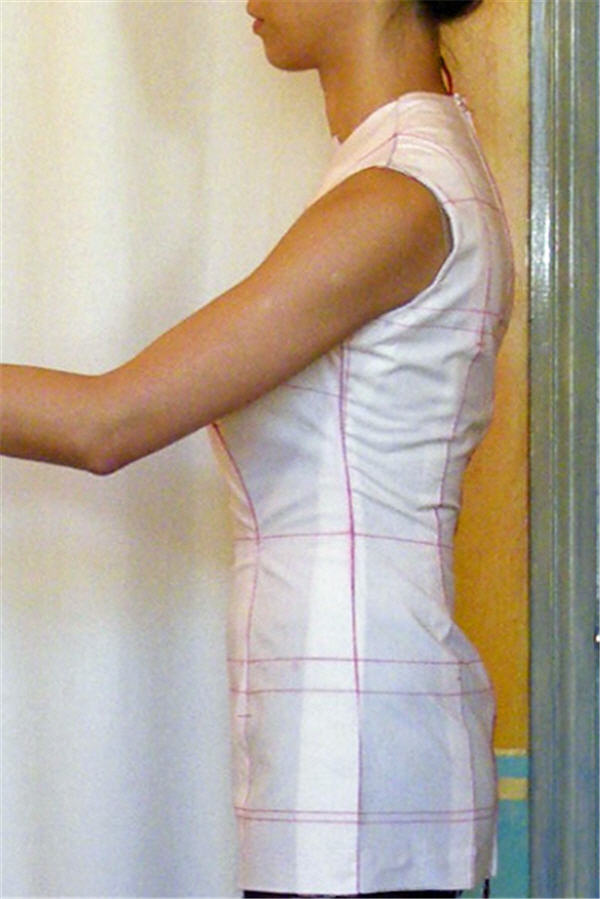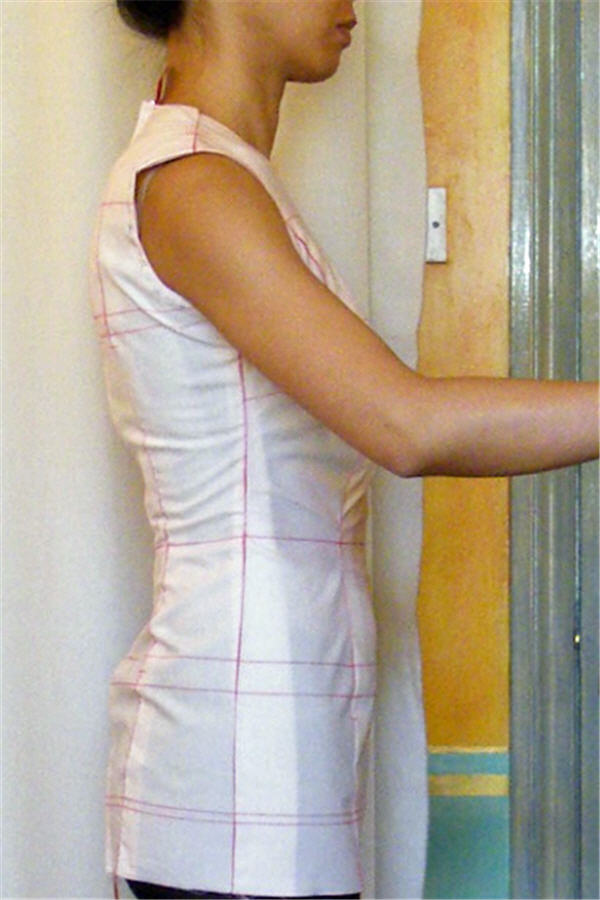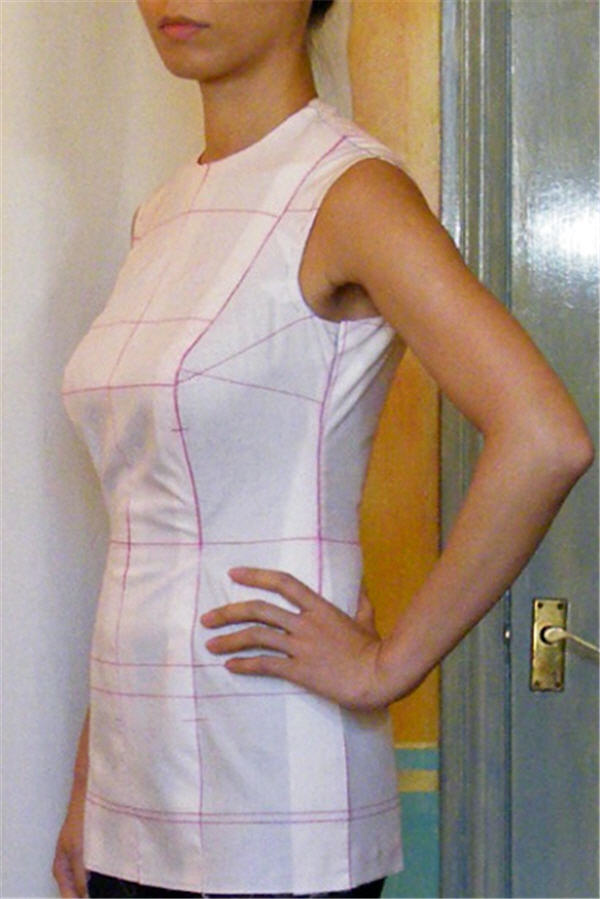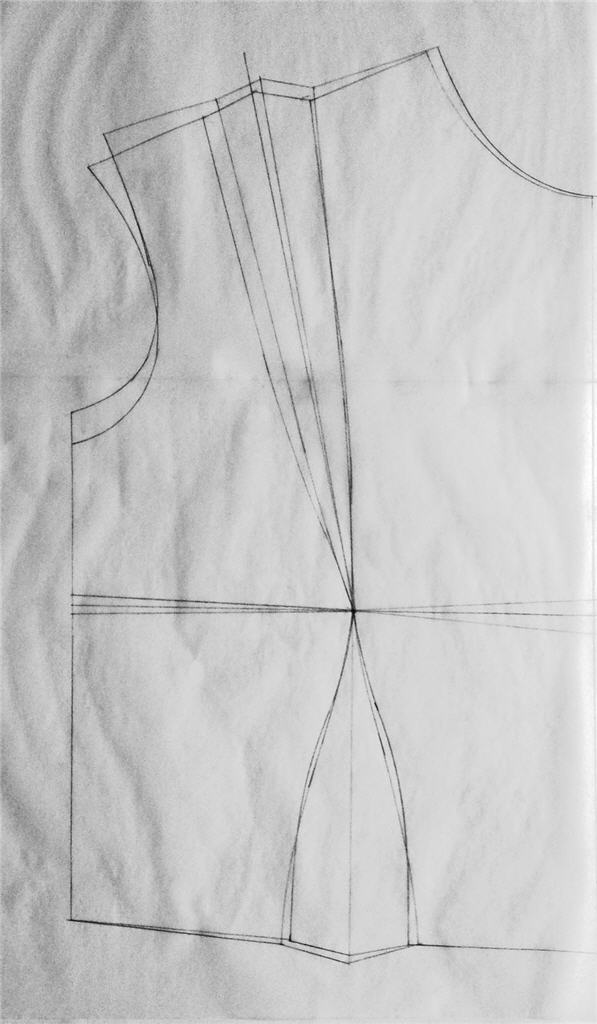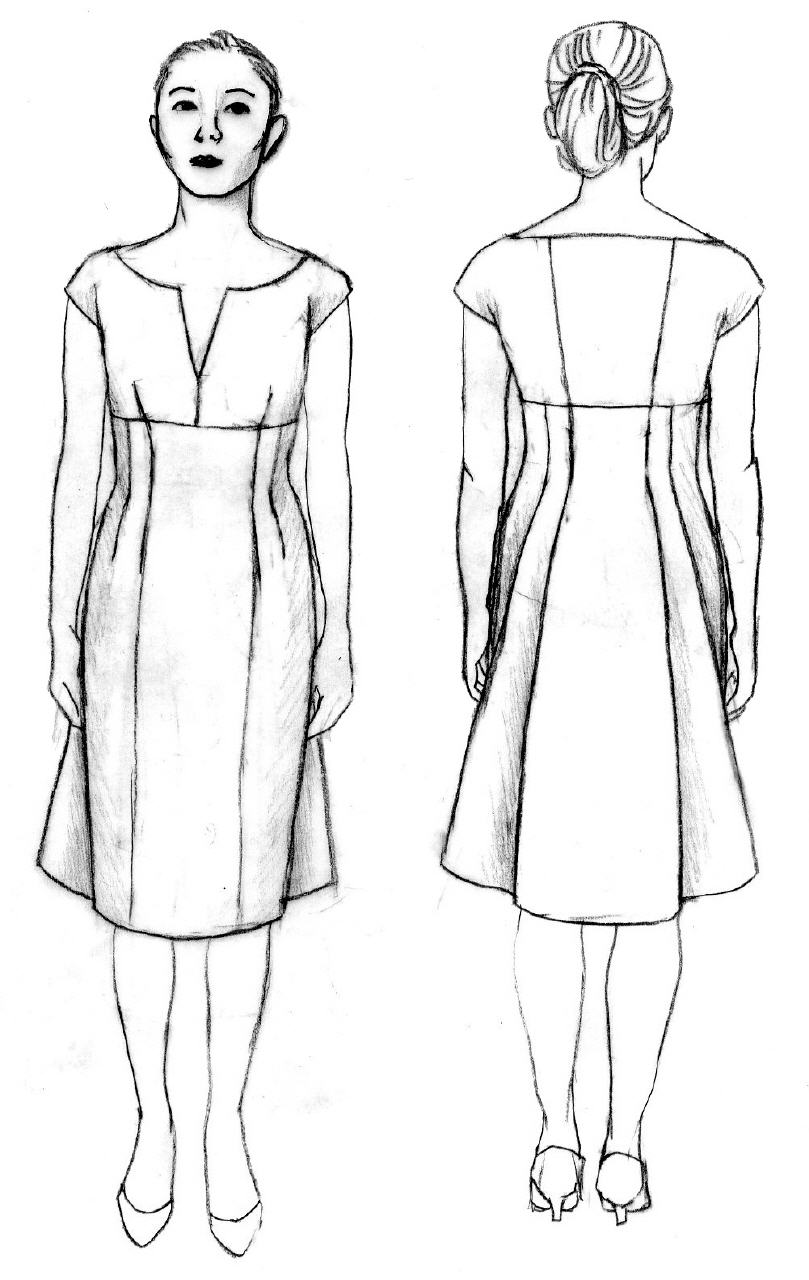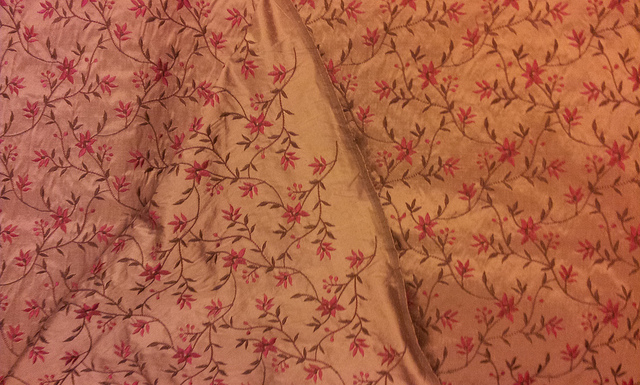OK, this is as good as it’s going to get fitting a moulage by myself.
Adjusted muslin 2:
So I’ve taken in all the suggestions I got on Pattern Review & Artisan Square – including feedback from the Master himself – Mr Kenneth King! OMG! This is what I’ve done:
- Reshaped the under-bust princess seam to better match my curve. This fixed most of the loose folds I had under the bust on the front.
- CF waist was still a bit low, so I removed the FBA length adjustment from front. On side front this length removal tapers to nothing at the side seam.
- Adjusted the armscye curve. This fixed a lot of my back underarm draglines. Ironically, removing tiny bit from the side seam just below the armpit so that the side seam is straighter also removed the remaining dragline at the armpit. You’d have thought it was too tight, not too loose!
- CB waist was also a bit low. Making a Sway Back horizontal dart across the waistline fixed this & also helped removed the back draglines above the waist and some below the waist.
- The remaining draglines at the back below the waist were more difficult to get rid off. I tried all sort of combinations & I’m still not sure if it’s 100% there yet. But this good-enough-for-now fix involved letting out at the back princess seams below my high hip while taking in at the side seam from under-bust all the way down.
- Finally, the lopsided shoulder adjustment seem to affect the neckline & shoulder-width as well. The lower shoulder side’s neckline is closer to my neck base, so the shoulder end point is further in. I redrew the neckline & upper armscye on the higher shoulder side to match. Interestingly, most low shoulder adjustment instructions don’t mention this potential side-effect of making one shoulder more sloped than the other. But Cabrera-Meyers’ “Classic Tailoring Techniques: A Construction Guide for Men’s Wear” has a different approach to low shoulder adjustment which also fix this side effect at the same time: The whole top area roughly above the bust line on the lower shoulder side is tilted, so not only is the shoulder lowered, but the neckline and shoulder is also further to the side. Interesting that they didn’t just tell you to pad out the lower shoulder.
There still seem to be minor wrinkles. But after reading Suzanne Stern‘s 8-9/1993 Threads article on fitting a custom dress form cover, I’ve decided to stop fiddling.
She worked as première main for Jacques Fath, one of the original Paris couturiers, so should know what’s she talking about. In a series of articles she demonstrated how they’d customize a dress form to mirror clients’ figures. The dress form cover is essentially a skin-tight draped moulage.
She mentioned that even in a properly fitted moulage / muslin sloper there might still be persistent minor wrinkles that wouldn’t appear in the final garment; that the wrinkles are due to the light-weight nature of muslin, especially when not all parts of the garment are attached yet – eg sleeves, skirts; and that there’s no need to spend unnecessary time trying to pin these away. (The articles are available on the Threads Archive DVD.)
One thing you may have noticed is that I’ve got a CF seam here and the zipper has been moved here from CB. Much easier to fix the back without that stiff separating zipper in the way. Plus much easier to zip in & out too!
Still need to transfer these changes to the patterns. I might test the modified patterns again in another muslin. Maybe I’ll use heavier weight ticking so the result can be used for the paper tape dress form I plan to make soon. Two birds one stone – love it!
